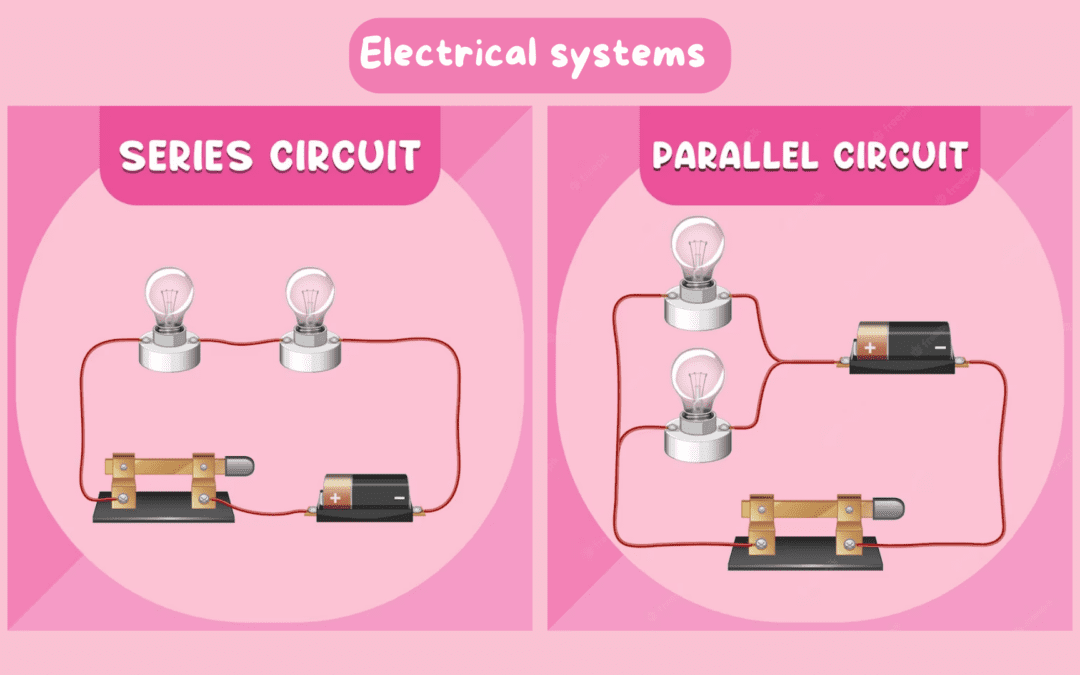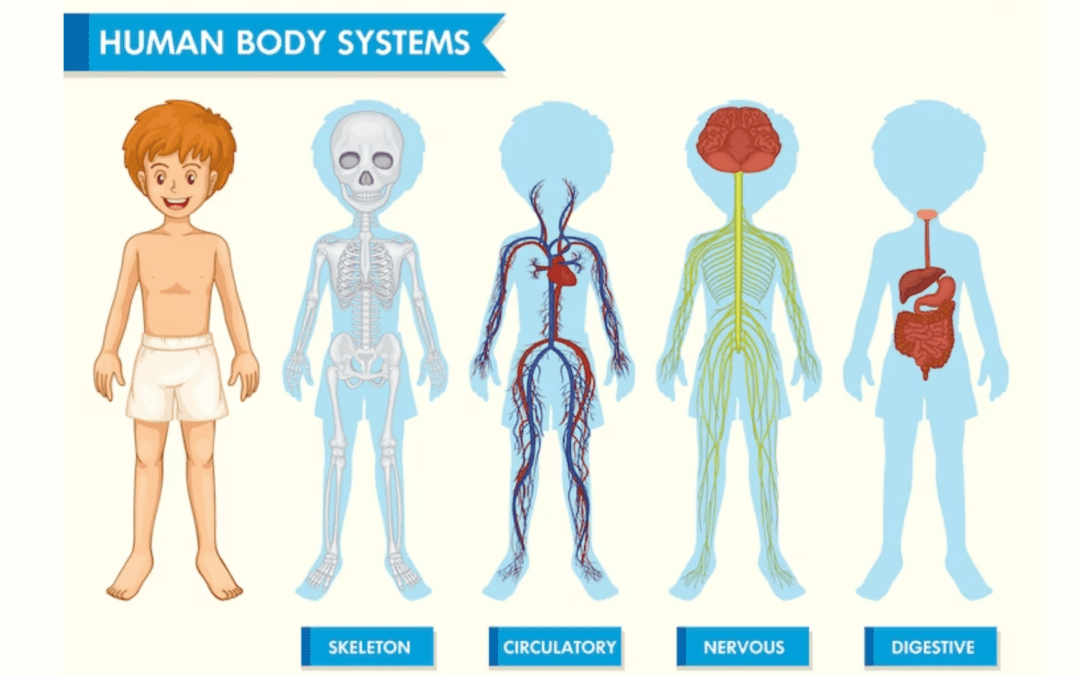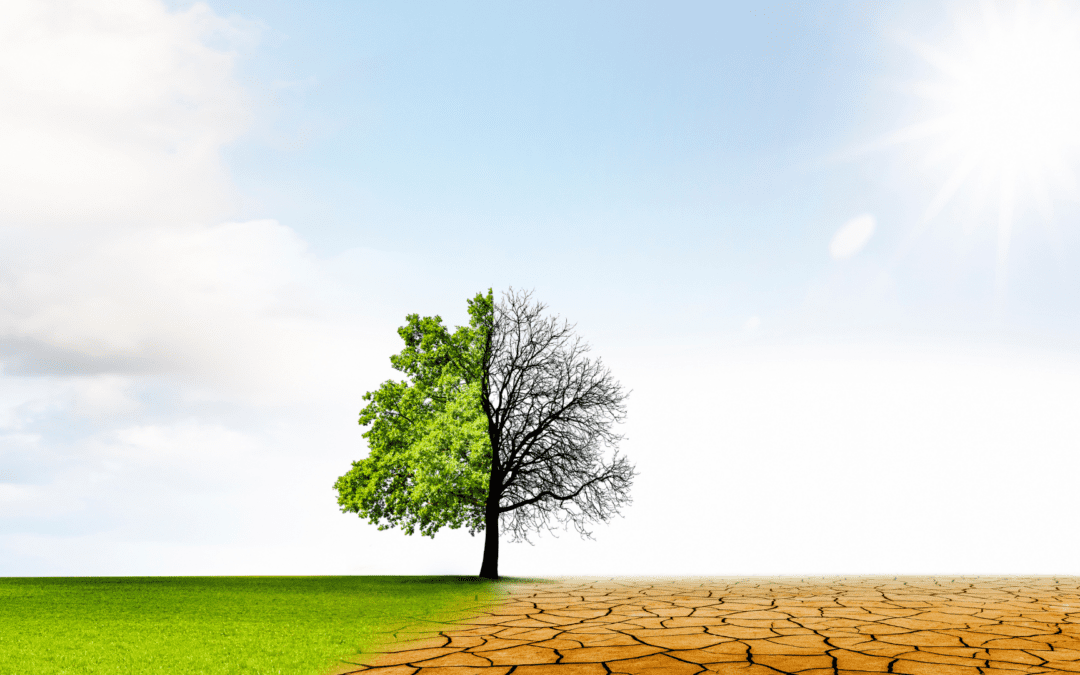Part 3 of Series
Let’s embark on an adventure of scientific discovery with our latest blog series! We’re thrilled to present you with some fascinating and fun experiments that can help children develop a passion for learning. This time, we’ll explore the captivating realm of earth science, which delves into the many mysteries of our planet and its intricate processes. So, get ready to uncover some exciting experiments that will bring the wonders of earth science to life!
Table of Contents
Experiment 1: Growing Crystals – An Experiment to Observe the Process of Crystallization
Experiment 2: Cloud in a Jar – Create Your Own Mini Weather System
Experiment 3: Fossil Excavation – Uncovering Prehistoric Discoveries
Experiment 4: Erosion Simulation – Exploring the Forces of Nature
Experiment 5: Testing Soil Acidity – An Experiment to Observe the Effects of Acidity on Plant Growth
Experiment 1: Growing Crystals – An Experiment to Observe the Process of Crystallization
Have you ever wanted to grow your own crystals? With this experiment, using alum, water, and food coloring you can grow your own beautiful crystals. Not only is it a fun activity, but it also allows you to observe the crystal structure and learn about the process of crystallization. Let’s get started!
What is Crystallization?
Crystallization is the process of forming a solid crystal structure from a liquid or gas. In this process, molecules come together in a specific pattern to form a solid that has a repeating geometric shape.

Materials Required for Growing Crystals
Let’s gather all the materials you’ll need:
- Alum powder
- Water
- Food coloring
- Glass jar or container
- String or pipe cleaners
- Pencil or chopstick
Steps for Growing Crystals
Step 1: Create a Crystal Solution
Mix alum powder with hot water in a glass jar or container until the powder dissolves. The ratio of alum to water should be about 1:2.
Step 2: Add Food Colouring
Add a few drops of food colouring to the solution and stir to mix. This will add colour to your crystals.
Step 3: Prepare the Crystals
Tie a string or pipe cleaner to a pencil or chopstick and dip it into the crystal solution. Make sure the string or pipe cleaner is fully immersed in the solution.
Step 4: Grow the Crystals
Place the pencil or chopstick over the opening of the jar or container so that the string or pipe cleaner hangs down into the solution. Leave the jar undisturbed for several hours or overnight, allowing the crystals to grow.
Step 5: Observe the Crystals
After the crystals have had time to grow, remove the string or pipe cleaner from the solution and observe the beautiful crystal structure.
Tips for Growing Crystals
Here are a few tips to keep in mind when growing crystals:
- Use a clean glass jar or container to prevent contamination.
- Make sure the alum powder is fully dissolved in the water to ensure crystal growth.
- Be patient and allow enough time for the crystals to grow.
FAQs
Q: What is alum powder and where can I find it?
A: Alum powder is a type of salt that can be found at many grocery stores or online.
Q: How long does it take for crystals to grow?
A: The amount of time it takes for crystals to grow varies depending on the size of the crystals and the conditions of the experiment. Generally, it takes several hours for crystals to fully form.
Q: Can I reuse the crystal solution?
A: Yes, you can reuse the crystal solution to grow more crystals.
Q: How do crystals form and what causes them to have a specific shape?
A: Crystals form when molecules come together in a specific pattern to form a solid that has a repeating geometric shape. The shape of the crystal is determined by the arrangement of the molecules and the conditions under which they form.
Q: Are there any safety precautions I should take when working with alum powder?
A: Alum powder is generally safe to handle, but it can cause skin irritation or eye damage if it comes into contact with
Experiment 2: Cloud in a Jar – Create Your Own Mini Weather System
Have you ever looked up at the sky and wondered how clouds form? With this experiment, you can create your own cloud in a jar and learn about the water cycle. Let’s get started!
What is a Cloud in a Jar?
A cloud in a jar is a science experiment that allows you to observe the process of cloud formation in a closed environment. The experiment involves creating a cloud inside a jar by cooling hot water vapour with ice, mimicking the process of cloud formation in the atmosphere.

Materials Required for Cloud in a Jar Experiment
Let’s first gather all the materials you’ll need:
- A glass jar with a lid
- Hot water
- Ice cubes
- A piece of paper
Steps for Creating a Cloud in a Jar
Step 1: Pour Hot Water into the Jar
The first step is to pour hot water into the glass jar, filling it about a quarter of the way.
Step 2: Place Ice Cubes on Top of the Jar
Next, place a few ice cubes on top of the jar lid, making sure that they cover the entire surface area of the lid.
Step 3: Wait and Observe
Now comes the fun part! Wait for a few minutes and observe as a cloud starts forming inside the jar. You may need to hold a piece of paper behind the jar to make it easier to see the cloud formation.
Step 4: Experiment with Different Variables
You can experiment with different variables to see how they affect the cloud formation. For example, try adding food colouring to the hot water to see how it affects the colour of the cloud.
Tips for Creating a Successful Cloud in a Jar Experiment
Here are a few tips to keep in mind when creating your own cloud in a jar:
- Use a clear glass jar to make it easier to observe the cloud formation.
- Make sure that the lid is airtight to prevent air from escaping and disrupting the cloud formation.
- Experiment with different amounts of hot water and ice cubes to see how it affects the cloud formation.
- Use a piece of paper behind the jar to make it easier to see the cloud formation.
FAQs
Q: Can I use a plastic jar for the experiment?
A: Yes, you can use a plastic jar as long as it has a lid that can create an airtight seal.
Q: Can I use warm water instead of hot water?
A: Yes, you can use warm water, but the cloud formation may not be as visible.
Q: How long does it take for the cloud to form?
A: It may take a few minutes for the cloud to form, depending on the temperature of the water and the amount of ice used.
Q: Can I use something other than ice to cool the water vapour?
A: Yes, you can use other materials such as frozen vegetables or a cold pack to cool the water vapour.
Experiment 3: Fossil Excavation – Uncovering Prehistoric Discoveries
Are you fascinated by fossils and the prehistoric world? With this exciting science experiment, you can become an expert in fossil excavation and uncover your own prehistoric discoveries! You will need a few basic materials, like plastic toy dinosaurs, plaster of Paris, and some tools for excavation. Are you ready to get excavating?
What is Fossil Excavation?
Fossil excavation is the process of uncovering and studying the remains of ancient plants and animals that have been preserved in rocks or other materials. In this experiment, you will be creating your own fossils using plastic toy dinosaurs and plaster of Paris, and then excavating them to learn about the process of fossilization.
Materials Required for Fossil Excavation Experiment
Here are the materials you’ll need:
- Plastic toy dinosaurs
- Plaster of Paris
- Water
- A mixing bowl
- A plastic spoon or toothbrush
- Newspaper or a plastic sheet to protect your work surface
Steps for Creating and Excavating Fossils
Step 1: Mix Plaster of Paris
The first step is to mix the plaster of Paris according to the instructions on the package. Use a mixing bowl and add water to the plaster, stirring until it becomes a thick and creamy.
Step 2: Bury the Toy Dinosaurs
Next, bury the plastic toy dinosaurs in the plaster of Paris, making sure that they are fully covered and submerged in the mixture. Let the plaster dry completely, which may take several hours.
Step 3: Excavate the Fossils
Once the plaster has fully dried, it’s time to excavate the fossils! Use a plastic spoon or toothbrush to carefully chip away at the plaster, uncovering the hidden dinosaur fossils. Be patient and take your time to avoid damaging the fossils.
Step 4: Clean and Observe the Fossils
After you have excavated the fossils, clean them off and observe them closely. You can even try to identify the type of dinosaur that you have uncovered based on its shape and characteristics.
Tips for a Successful Fossil Excavation Experiment
Here are a few tips to keep in mind when creating and excavating your own fossils:
- Use a plastic sheet or newspaper to protect your work surface from the plaster.
- Make sure that the plaster fully covers and submerges the toy dinosaurs for the best results.
- Take your time and be patient when excavating the fossils to avoid damaging them.
- Clean the fossils carefully to avoid scratching or breaking them.
FAQs
Q: Can I use other materials besides toy dinosaurs?
A: Yes, you can use other materials such as shells, leaves, or even your own handprint.
Q: How long does it take for the plaster to dry?
A: It may take several hours for the plaster to fully dry, depending on the thickness of the mixture and the humidity of the environment.
Q: Can I paint the fossils after excavating them?
A: Yes, you can paint the fossils to make them more realistic and visually appealing.
Q: What other tools can I use for excavating the fossils?
A: You can also use a small chisel or brush for excavating the fossils, depending on your preference and the size of the fossils.
Q: How do fossils form in nature?
A: Fossils form when plants or animals are buried in sediment and over time, the minerals in the sediment replace the organic material, preserving it as a fossil.
Experiment 4: Erosion Simulation – Exploring the Forces of Nature
Have you ever wondered how erosion shapes the earth’s surface? With this exciting science experiment, you can create your own erosion simulation and learn all about this natural process. Let’s get started!
What is Erosion?
Erosion is the process by which soil and rock are removed from the earth’s surface by natural forces such as wind, water, and ice. Erosion is a natural and necessary process that shapes our world, but it can also cause problems such as landslides and soil erosion.
Materials Required for Erosion Simulation Experiment
You will need:
- Sand
- Soil
- Rocks
- Water
- A plastic container
- A spray bottle
Steps for Creating Erosion Simulation
Now that we have all the materials ready, let’s start with the step-by-step process for creating your very own erosion simulation:
Step 1: Fill the Container with Sand or Soil
The first step is to fill the plastic container with a layer of sand or soil, about an inch deep.
Step 2: Add Rocks
Next, add some rocks on top of the sand or soil layer, placing them randomly or in a specific pattern. This will simulate the natural terrain and create different areas of resistance to the water flow.
Step 3: Add Water
Pour water into the container until it reaches the top of the sand or soil layer. You can use tap water or add food colouring to make it easier to observe the erosion patterns.
Step 4: Mimic Rainfall
Use a spray bottle to mimic rainfall and create different water flow rates and angles. Observe how the water moves the soil and rocks, creating erosion patterns in the sand.
Step 5: Experiment with Water Flow Rates and Angles
Experiment with different water flow rates and angles to see how they affect erosion patterns. You can also try adding more rocks or changing the shape of the container to see how these factors affect erosion.
Tips for a Successful Erosion Simulation Experiment
Here are a few tips:
- Use a plastic container that is large enough to observe the erosion patterns clearly.
- Vary the water flow rates and angles to create different erosion patterns.
- Observe how the rocks affect the erosion patterns and try different rock sizes and shapes.
- Experiment with different types of soil and sand to see how they erode differently.
FAQs
Q: Can I use different types of rocks or soil?
A: Yes, you can use different types of rocks or soil to create different erosion patterns and simulate different environments.
Q: How long does it take to see erosion patterns?
A: Erosion patterns may start to form immediately, but it may take several minutes or even hours to see noticeable changes.
Q: Can I use a different container?
A: Yes, you can use a different type of container as long as it is large enough to observe the erosion patterns clearly.
Q: How does erosion affect the environment?
A: Erosion can cause problems such as landslides and soil erosion, but it is also a natural and necessary process that shapes our world.
Q: How does water affect erosion?
A: Water is a major cause of erosion and can create powerful forces that shape the earth’s surface. The flow of water can carry away soil and rocks, creating erosion patterns in the landscape.
Experiment 5: Testing Soil Acidity – An Experiment to Observe the Effects of Acidity on Plant Growth
Have you ever wondered about the acidity of your soil and how it affects your plants? With this experiment, you can test the pH of soil samples from different areas in your yard using vinegar and baking soda.
What is Soil Acidity?
Soil acidity refers to the level of acidity or alkalinity in the soil, which is measured on the pH scale. The pH scale ranges from 0 to 14, with 7 being neutral. Values below 7 indicate acidity, while values above 7 indicate alkalinity.
Materials Required for Soil Acidity Test
You’ll need:
- Soil samples from different areas in your yard
- Vinegar
- Baking soda
- Water
- Clear plastic cups
- pH testing strips (optional)
Steps for Testing Soil Acidity
Step 1: Collect Soil Samples
Collect soil samples from different areas in your yard and label them accordingly.
Step 2: Prepare Soil Samples
Add a small amount of soil to each clear plastic cup and add enough water to make a muddy consistency.
Step 3: Test Soil with Vinegar
Add a small amount of vinegar to each soil sample and observe the reaction. If the soil fizzes or bubbles, it is alkaline.
Step 4: Test Soil with Baking Soda
Add a small amount of baking soda to each soil sample and observe the reaction. If the soil fizzes or bubbles, it is acidic.
Step 5: Observe Results
Observe the results of the tests and record the pH levels of each soil sample. You can also use pH testing strips for more accurate readings.
Tips for Testing Soil Acidity
- Test soil samples from different areas in your yard to get a more accurate representation of your soil’s acidity.
- Use clear plastic cups to make it easier to observe the reactions.
- Wear gloves and avoid contact with vinegar and baking soda to prevent skin irritation.
FAQs
Q: How does soil acidity affect plant growth?
A: Soil acidity affects plant growth by affecting the availability of nutrients in the soil. Acidic soil can cause nutrient deficiencies and stunted growth.
Q: What pH level is considered neutral?
A: A pH level of 7 is considered neutral on the pH scale.
Q: How can I adjust the pH level of my soil?
A: You can adjust the pH level of your soil by adding lime to acidic soil or sulphur to alkaline soil.
Q: Can soil acidity be harmful to human health?
A: Soil acidity is not harmful to human health, but it can affect the quality and growth of plants.
Q: What are some common signs of acidic soil?
A: Some common signs of acidic soil include yellowing leaves, stunted growth, and a build-up of moss or algae.
Remember to revisit our site for the next blog in the series and discover even more exciting and educational science experiments to try with children.



















